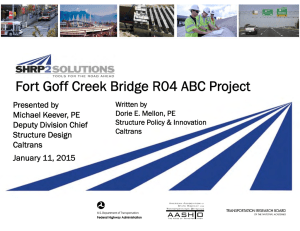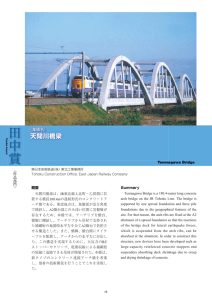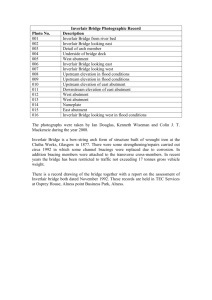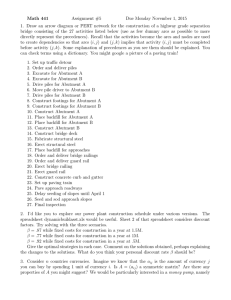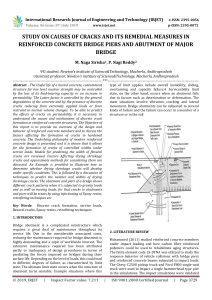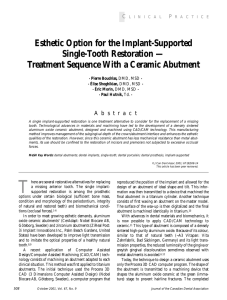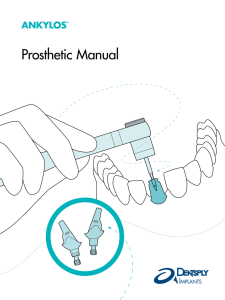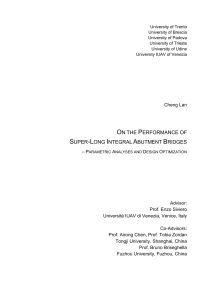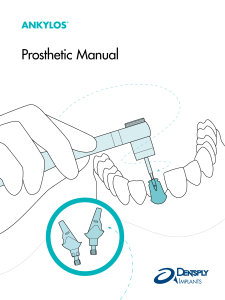Cost Effective Use of Accelerated Steel Bridge Construction and
advertisement
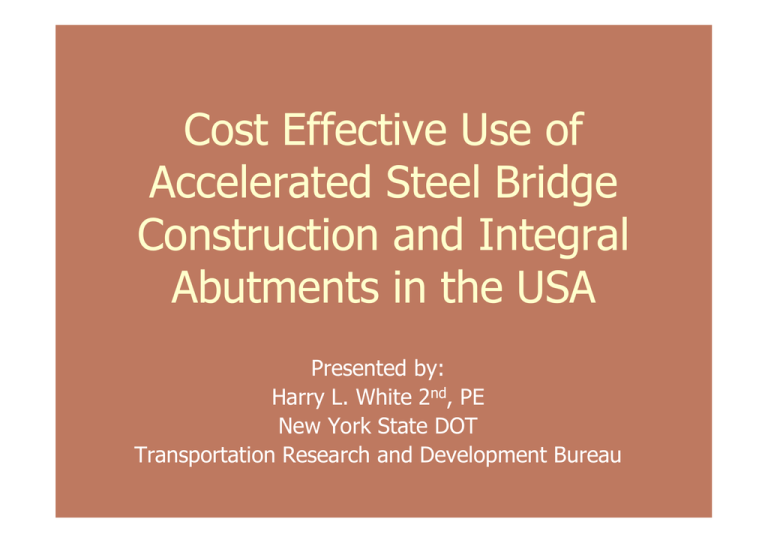
Cost Effective Use of Accelerated Steel Bridge Construction and Integral Abutments in the USA Presented by: Harry L. White 2nd, PE New York State DOT Transportation Research and Development Bureau Lecture Outline Accelerated Bridge Construction (ABC) – Why use it? – What is it? – How is it being done in the USA? Integral Abutment Bridges – What are they? – What are the benefits/risks? – How is it being done in the USA? Why Use ABC? There Are Hidden Costs Traffic Disruption Wasted Fuel/Time Danger to Drivers/Construction Workers Lost Business Noise for Local Residents Increase in Stress for all involved Often, these hidden costs can exceed the cost of the actual structure. What is ABC? What is ABC? “ABC is bridge construction that uses innovative planning, design, materials, and construction methods in a safe and cost-effective manner to reduce the onsite construction time that occurs when building new bridges or replacing and rehabilitating existing bridges.” - Federal Highway Administration In Other Words… Accelerated Bridge Construction takes less time than normal. Accelerated Bridge Construction Federal Highway Administration Initiative – “Get In. Get Out. Stay Out.” Prefabricated Bridge Elements (PBE) – Manufactured Away From Construction Site – Stored Until Ready – Delivered When Needed – Installed Quickly How Does the USA Use ABC? Precast Footings Splice-Sleeve Connector Precast Pier Elements Precast Deck Panels Ultra-High Performance Concrete (UHPC) Three Separate Components – Bagged Cement Powder – Steel Fiber Reinforcement – Chemical Admixtures Compressive Strength: 150 MPa (22 ksi) Post-Cracking Tensile Strength: 5 MPa 19 mm diameter reinforcing bar fully developed with only 100 mm embedment Test Slabs - NYSDOT Entire Superstructures SPMT – Self Propelled Modular Transports – Requires assembly area – Requires clearance – Requires level under road access Float-In – Assembly area does not need to be nearby – Requires waterway Sufficient depth Sufficient clearance Self-Propelled Modular Transports Willis Avenue, New York City Float-In Integral Abutments No Joints No Bearings Single Row of Piles Lower Initial Cost Less Maintenance More Durable Fully Integral Abutment Bridges Fully Integral Abutment Bridges Design Consistency “Informed Art” not “Absolute Science” No Approved Design Methodology Rules of One Agency Ignored by Others – 46% Orient piles in weak-axis bending – 33% Orient Piles in strong-axis bending – 8% No preference for pile orientation – 13% Require use of symmetrical piles Design Considerations Translation is Primary Abutment Movement Rotation of Abutment Depends on: – Abutment height – Beam depth and connection details – Span length – Backfill compaction – ‘Soil Ratcheting’ Design Considerations Most States Limit Span Lengths – Longest steel span 318 m in Colorado, USA – Longest cast-in-place concrete span 290 m (Colorado, USA) – Longest prestressed concrete span 358 m (Tennessee, USA) Span Lengths Usually Based on Experience Design Considerations (cont.) Typical Beam Designed Simply-Supported – Conservative – Provides safety-factor for abutment rotations Actual Connection of Superstructure and Abutment is Between Pinned and Fixed Beam depth Beam material Connection details Steel Superstructures PBES Integral Abutment Conclusions Integral Abutments are: – Inexpensive on a first cost basis – Inexpensive on a life-cycle basis – Redundant and robust for extreme events – Enhanced load distribution at girder ends – Rapid construction – Larger tolerances – Preferred abutment type for most agencies ABC May Improve: Total Construction Time – Multiple elements may be fabricated at once Material Quality and Durability – Fabricated in a controlled environment Work-Zone Safety – Less time on-site reduces chance of accidents ABC May Reduce: Traffic Impacts – Prefabricated elements install quickly Weather-Related Time Delays – Prefabrication permits a predictable schedule Environmental Impacts – Fabrication in a controlled environment Interference With Nearby Utilities Thank You
